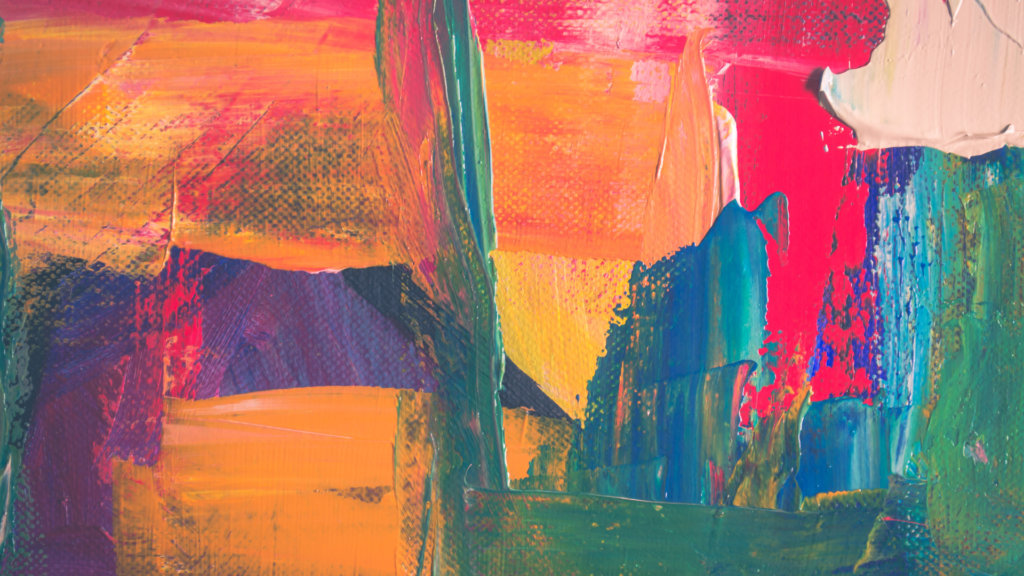All around us, we see examples of art being created. Whether it is in a museum, on a canvas, or poured into a mould, art is everywhere. So what is art, and what makes it different from other types of creations?
In this blog post, we will explore the definition of art, its history, and how it has evolved over time. After reading this article, you will have a better understanding of what painting is and why it’s considered an important form of art.
What is Painting?
Painting is an ancient art form that has been practiced for centuries. It can be defined as the use of paint, brushes, and other medium to create a picture or a piece of art.
Painting is often considered one of the most important forms of art because it allows artists to depict their thoughts and feelings in a way that can be seen by others.
There are many different types of painting, including oil painting, watercolour painting, acrylic painting, and mixed media painting.
- Oil painting is usually done on canvas and uses heavy oil paint to create a detailed picture.
- Watercolour painting is done on paper and uses light watercolours to create delicate pictures. Acrylic painting is done on canvas and uses synthetic materials like polyester resins to produce images that are difficult to remove.
- Mixed media paintings include elements from more than one type of painting such as sculpture or prints.
There are many different styles of painting, including realism, impressionism, cubism, modernism, postmodernism, and abstract expressionism.
- Realism is a style that depicts scenes as they appear in reality while impressionism focuses on the emotions felt by the artist when creating the work.
- Cubism is a style that combines realism with geometric shapes while modernism aims to simplify traditional art forms while still retaining their beauty.
- Postmodernism challenges traditional notions about art while abstract expressionism strives for pure creative expression without any specific meaning or subject matter.
The History of Painting
Painting is one of the oldest forms of art, dating back to prehistoric times. There are many different schools of painting, and the techniques used vary from artist to artist.
One of the earliest forms of painting was cave painting, which dates back over 30,000 years. Cave paintings depict animals, humans, and scenes from mythology. Some cave paintings even show evidence of surgical procedures!
Later on in history, painters began using more colours and techniques to create their works. Early Renaissance painters used a lot of oil paints to create their pieces. Later on, in the 18th century, British artists started using watercolours to paint their works.
In the 20th century, modernist painters started using abstract techniques to create their work. They sometimes used materials like wire and Plexiglas to create new pieces that looked different from traditional paintings.
Elements of a Painting
There are many elements that make up a painting. These include the canvas or surface on which the image is painted, the paintbrush or other tool used to apply the paint, and any surrounding scenery or objects.
A basic understanding of these elements is necessary for anyone interested in painting. Canvases vary in size and shape, so it’s important to choose one that will fit the image you want to create.
Paint can be thick or thin, and some paints are more opaque than others. Different types of paints require different techniques to apply them smoothly and evenly.
Once you have your canvas set up and ready to go, it’s time to start painting! Start by applying a light layer of paint to just the areas you want to darkened, then build up the darkness until you achieve the effect you’re looking for.
Remember that dark paints will often need more layers than light ones to achieve a desired effect; use your judgement as to when you’ve added enough darkness.
To add details or highlight specific parts of an image, use a brush with smaller bristles. For general outlining and shading, use larger bristles.
To add highlights or reflections in water or other wet surfaces, use a very fine brush tip.
And Finally…always clean your brushes after each painting session!
How to Paint a Scene
In this article, we will be discussing how to paint a scene. Painting is one of the oldest forms of art and can be done by anyone with a bit of imagination and skill. Here are some tips on how to paint a scene:
- Start by sketching out your ideas on paper first. This will help you get an idea of what you want to paint and where you want to start.
- Once you have your ideas down, start painting with a light brush to get started. Don’t be afraid to add some details early on in the painting process.
- As you continue painting, add more layers of colour and detail until the picture is complete. Be sure to let your creativity run wild!
Painting is an art form that has been around for centuries, and it still holds a lot of power today. Whether you are a beginner looking to try your hand at painting or an experienced artist who wants to branch out into new territory, there is a painting style that will fit your needs.
And with so many different types of paints and brushes available on the market, there is no limit to what you can achieve as an artist. If you are interested in trying out painting as a form of art, be sure to take some time to explore all the different options that are available to you.

